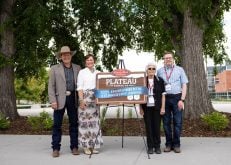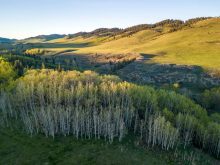Pasture recovery is an important topic on the heels of last year’s dry conditions, particularly given this year’s poor snow cover in the central and southern regions of Alberta.
“If we have a dry spring, producers will need to balance potential feed shortages with the need to protect their recovering pastures,” said provincial forage and beef specialist Karin Lindquist.
Pasture quality is key to maximizing the grazing season, so don’t get in a rush to get your cows on the greening-up pasture, she said.
Read Also

Grazing ‘sweet spot’ boosts pasture performance
Timing-focused approach to pasture management touted to boost forage growth, livestock gains while also cutting farmer labour and inputs
“Typically, animals should not begin grazing until pasture forages are at least eight to 12 inches tall, or at the four- or five-leaf stage, which is usually in mid-May for northern Alberta, and mid- to late-April for southern Alberta.”
Early grazing can set the pasture back several weeks or months, and nutrient quality is lacking.
“When cattle are consuming plants at emergence, they are getting 90 to 95 per cent water rather than essential nutrients like energy and protein,” said Lindquist.
So what’s the science behind deferring spring grazing?
“Plants use energy stored in their roots to begin growth, and do not start generating their own energy with their leaves through photosynthesis until they are at the second- to third-leaf stage,” she said.
However, nutrients from the roots continue to be used for growth by the plant until after the plant reaches the fourth- or fifth-leaf stage.
“After that, energy is primarily produced from the leaves via photosynthesis, and extra energy is stored in the roots.”
Proper recovery time will ultimately maximize or extend available grazing days.
“The rule we use is this: If producers are looking to extend grazing into the fall, for every day early they put their cattle out to graze in the spring, they may have three less days to graze in the fall.”
So what can producers do in the interim, especially if feed supplies are dwindling?
As hay may be limited, some producers can incorporate alternate feeds such as pea straw or silage, small grains like oats and barley, or byproducts like wheat middlings or dried distillers grains.
“Barley and oat grain supplies are currently the cheapest feed alternatives to consider that will help prolong feed supplies,” said Lindquist.
“Producers can utilize crop-residue grazing by sectioning off the field with temporary electric fencing to strip graze, or by stockpiling grazing areas that have not been previously grazed for some time.”
But proceed with caution.
“Stockpiling can also set back spring growth if there are young plants coming up in the stockpiled or non-grazed stand.”
And there are no guarantees when it comes to quality of stockpiled forages.
“Quality may be poor if grasses have not retained nutrients throughout the winter, and have been leached with early melting,” she said.
Supplementing cattle with grain or feed pellets will also help reduce grazing pressure and get cattle to consume less stockpiled forage.
“Creep feeding calves at 50 to 60 days of age with a 16 per cent protein feed will help alleviate the increased nutritional requirements of lactating cows because it puts less pressure on those cows to eat higher-quality feeds for optimum milk production to raise a good-size, 600-pound calf at weaning,” said Lindquist.
This also gives cows the opportunity to put on weight if they have fallen short on body condition over the winter.
By deferring grazing in a dry spring, forages have a wider window of opportunity to grow, ultimately providing more feed and nutrients for cattle, with the possibility of regrazing later in the year.















